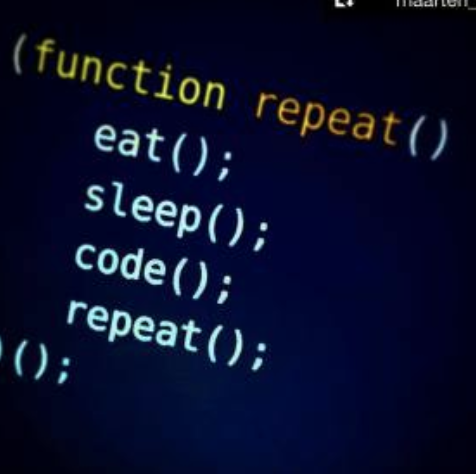GetX 상태관리 정리
Updated:
GetX란
GetX란 Provider와 같은 상태 관리 라이브러리이다.
GetX 환경 설정
- getx 라이브러리 import
상태관리
GetX를 통한 상태관리 방식은 두가지가 있다.
1. 단순 상태 관리
-
Controller
import 'package:get/get.dart'; class SimpleStateController extends GetxController { int count = 0; void increment() { count++; update(); } } -
Builder
Column( children [ GetBuilder<SimpleStateController>( builder: (c) { return Text('count' : '${c.count}'); } ) ElevatedButton( onPressed: () { Get.find<SimpleStateController>().increment(); } child: Text('Count Up!'), ) ] ) -
하지만 이렇게만 하면 컨트롤러가 initiate가 안되었기 때문에 에러가 난다. GetX 컨트롤러 initiation 방법에는 두가지가 있다.
-
Initiation 1 : GetBuilder 안에서 initiate
Column( children [ GetBuilder<SimpleStateController>( init: SimpleStateController(), builder: (c) { return Text('count' : '${c.count}'); } ) ElevatedButton( onPressed: () { Get.find<SimpleStateController>().increment(); } child: Text('Count Up!'), ) ] ) -
Initiation 2 : Get.put() 사용
@override Widget build(BuildContext context) { final controller = Get.put(SimpleStateController()); ... }Column( children [ GetBuilder<SimpleStateController>( // init: SimpleStateController(), init 안써도 됨 builder: (c) { return Text('count' : '${c.count}'); } ) ElevatedButton( onPressed: () { controller.increment(); // controller라는 지정한 이름으로 사용 } child: Text('Count Up!'), ) ] )
2. 반응형 상태 관리
-
Controller
import 'package:get/get.dart'; class ReactiveStateController extends GetxController { RxInt count1 = 0.obs; //RxInt 대신에 var 써도 됨 //RxString, RxBool, 등 } -
Builder
Column( children [ GetX<ReactiveStateController>( builder:(c){ return Text('Count 1 : ${c.count1.value}') // primitive 타입일 때는 .value 필수 } , ), ElevatedButton( onPressed: () { Get.find<ReactiveStateController>().count1++; } child: Text('Count Up!'), ) ] ) -
반응형도 단순형과 마찬가지로 이렇게만 하면 컨트롤러가 initiate가 안되었기 때문에 에러가 난다. GetX 컨트롤러 initiation 방법에는 두가지가 있다.
-
Initiation 1 : GetX안에서 initiate
Column( children [ GetX<ReactiveStateController>( init: ReactiveStateController(), builder:(c){ return Text('Count 1 : ${c.count1.value}') // primitive 타입일 때는 .value 필수 } , ), ElevatedButton( onPressed: () { Get.find<ReactiveStateController>().count1++; } child: Text('Count Up!'), ) ] ) -
Initiation 2 : Get.put() 사용
@override Widget build(BuildContext context) { final controller = Get.put(ReactiveStateController()); ... }Column( children [ GetBuilder<ReactiveStateController>( // init: SimpleStateController(), init 안써도 됨 builder: (c) { return Text('count' : '${c.count.value}'); } Obx(() { return Text('count' : '${controller.count2.value}'); }) // Obx(Observable)는 빌더 필요 없는 방식 ) ElevatedButton( onPressed: () { controller.count1++; // controller라는 지정한 이름으로 사용 } child: Text('Count Up!'), ) ... ] )
3. 반응형 상태관리의 추가 기능
-
반응형 getter
import 'package:get/get.dart'; class ReactiveStateController extends GetxController { RxInt count1 = 0.obs; var count2 = 0.obs; get sum => count1.value + count2.value; // 둘 중의 하나 이상이 변경 될 때 자동으로 최신화 시켜주는 getter }Column( children [ GetBuilder<ReactiveStateController>( builder: (c) { return Text('count1' : '${c.count2.value}'); }, Obx(() { return Text('count2' : '${controller.count2.value}'); }), // Obx(Observable)는 빌더 필요 없는 방식 Obx(() { return Text('SUM' : '${controller.sum}'); // sum은 count1과 count2를 전부 듣고 있다 // 하지만 변경이 될 때만 듣는 방식이다 }) ) ElevatedButton( onPressed: () { controller.count1++; // controller라는 지정한 이름으로 사용 } child: Text('Count Up!'), ) ... ] )
그 외의 기능으로는 다음 기능들이 있다
- 반응형 Class
- 반응형 List
- onInit()에 추가되는 Worker들
- Ever : 매번 변경 될 때 실행
- Once : 처음 변경 되었을 때만 실행
- Interval : 계속 변경이 있는 동안 특정 지정 시간 인터벌이 지나면 실행
- Debounce : 인터벌이 끝나고 나서 특정 지정 시간 이후에 한번만 실행
4. 단순형 상태관리 vs 반응형 상태관리
큰 차이가 없다면 단순상태관리가 메모리도 적게 쓰고 효율적이다. 하지만 worker를 사용해야 하는 경우에는 반응형 상태관리를 써야 한다.


Leave a comment